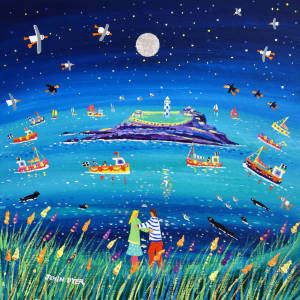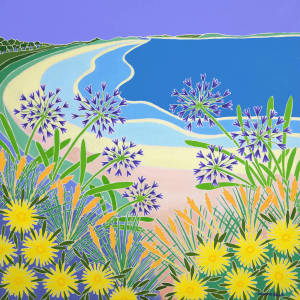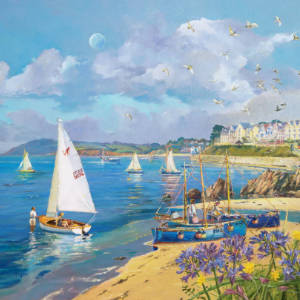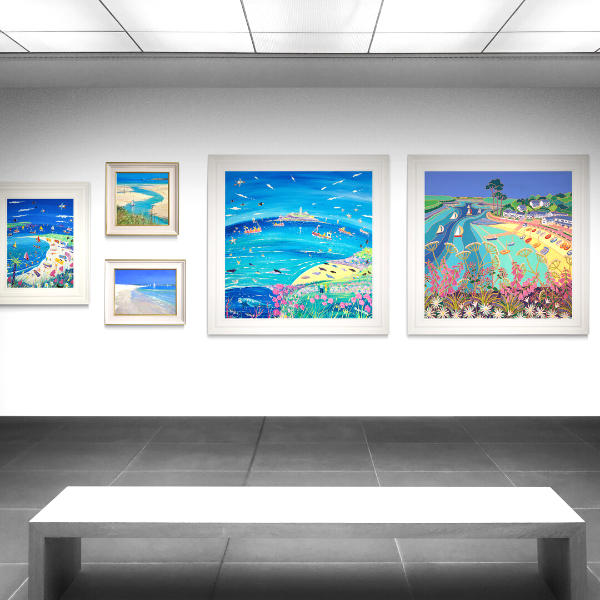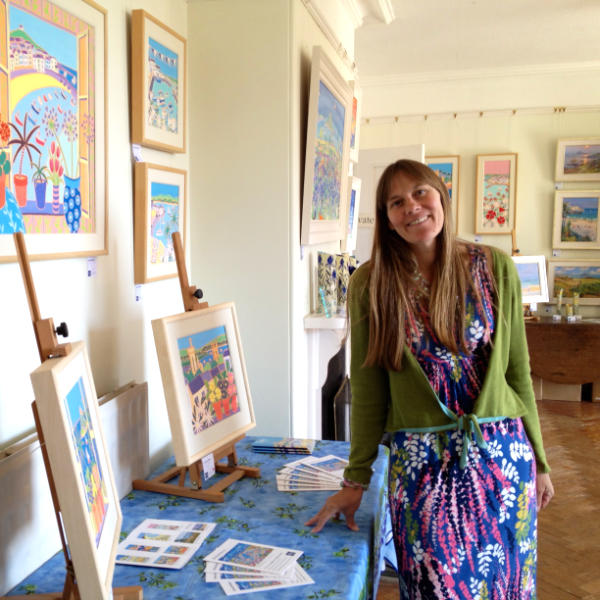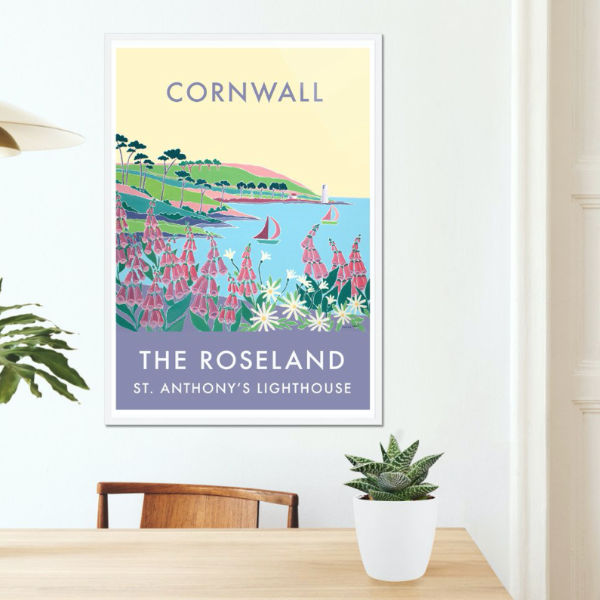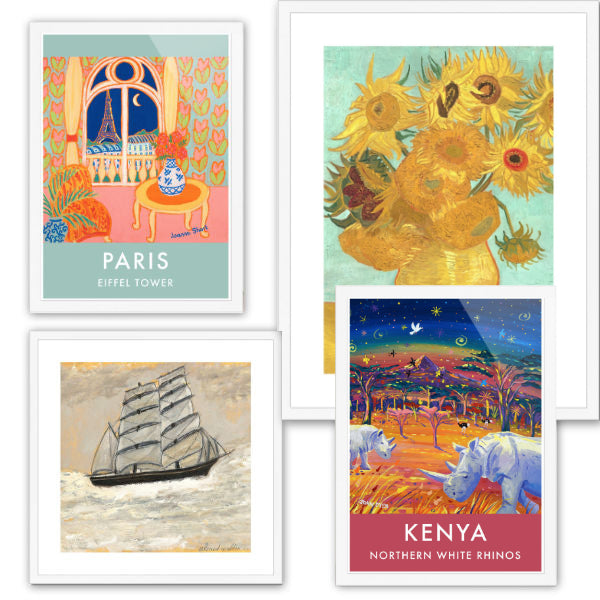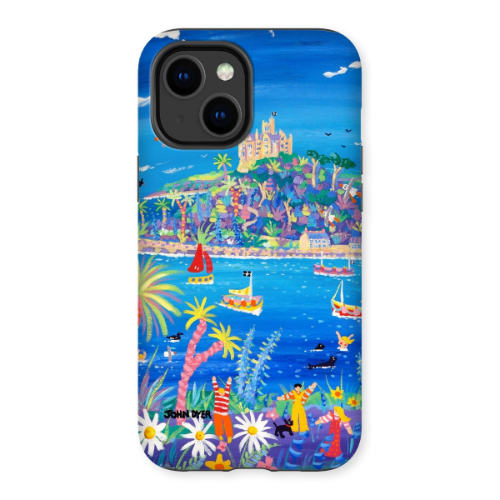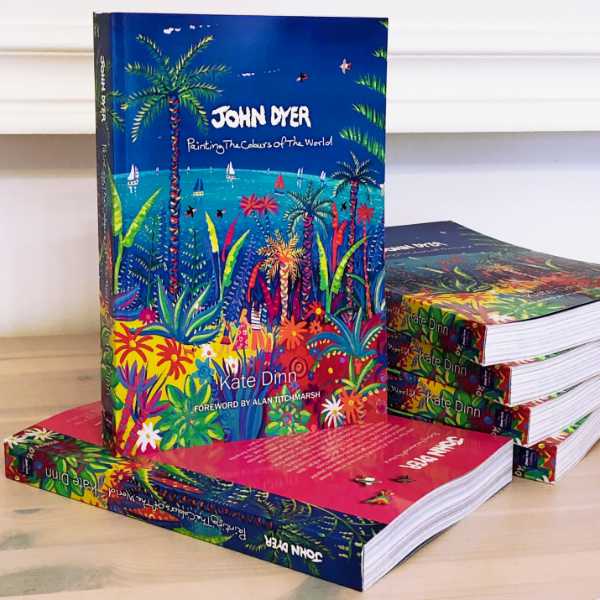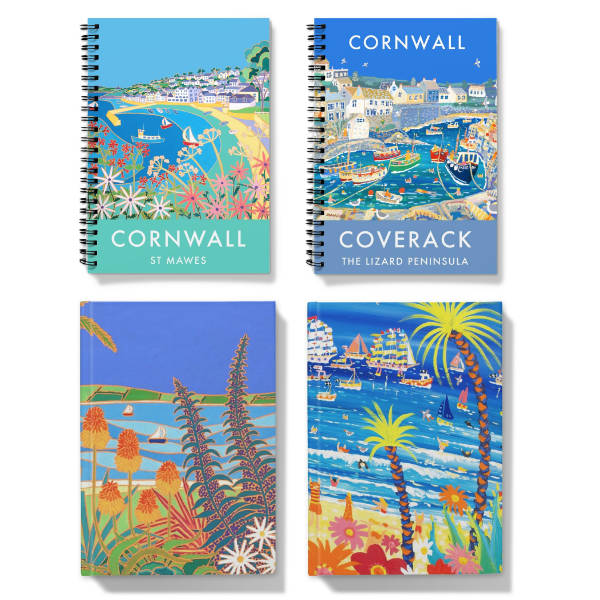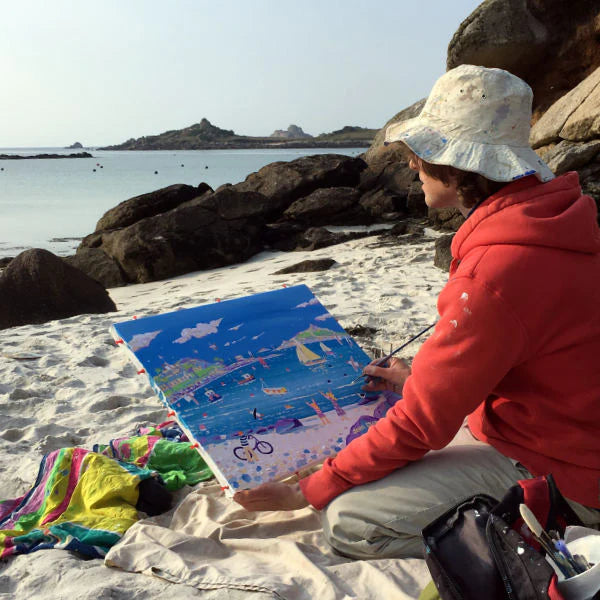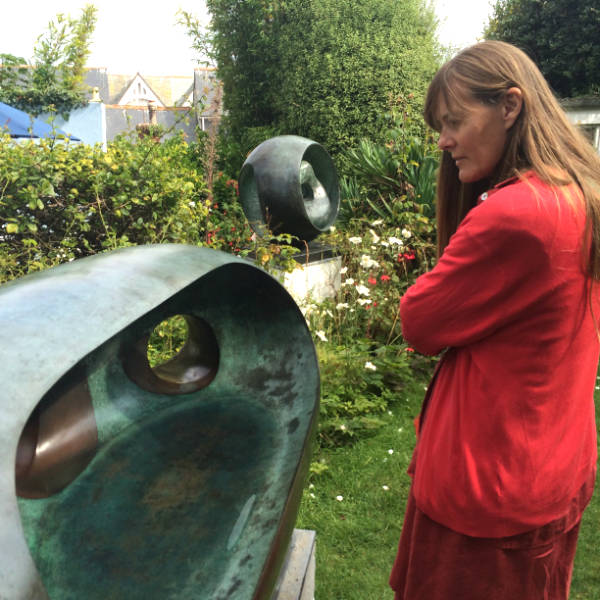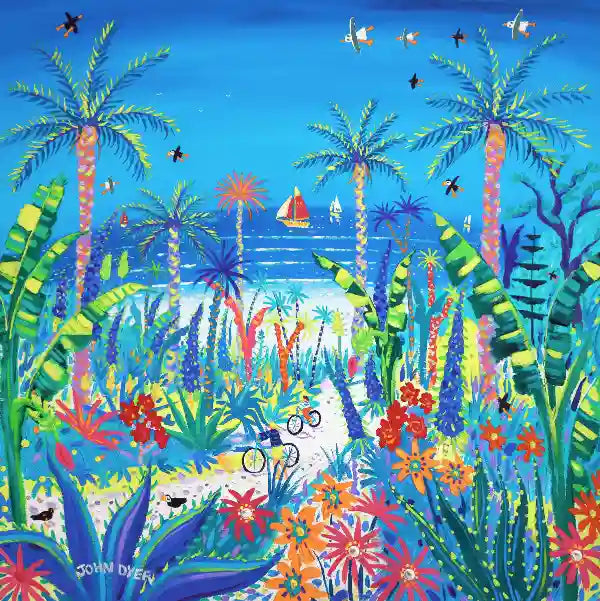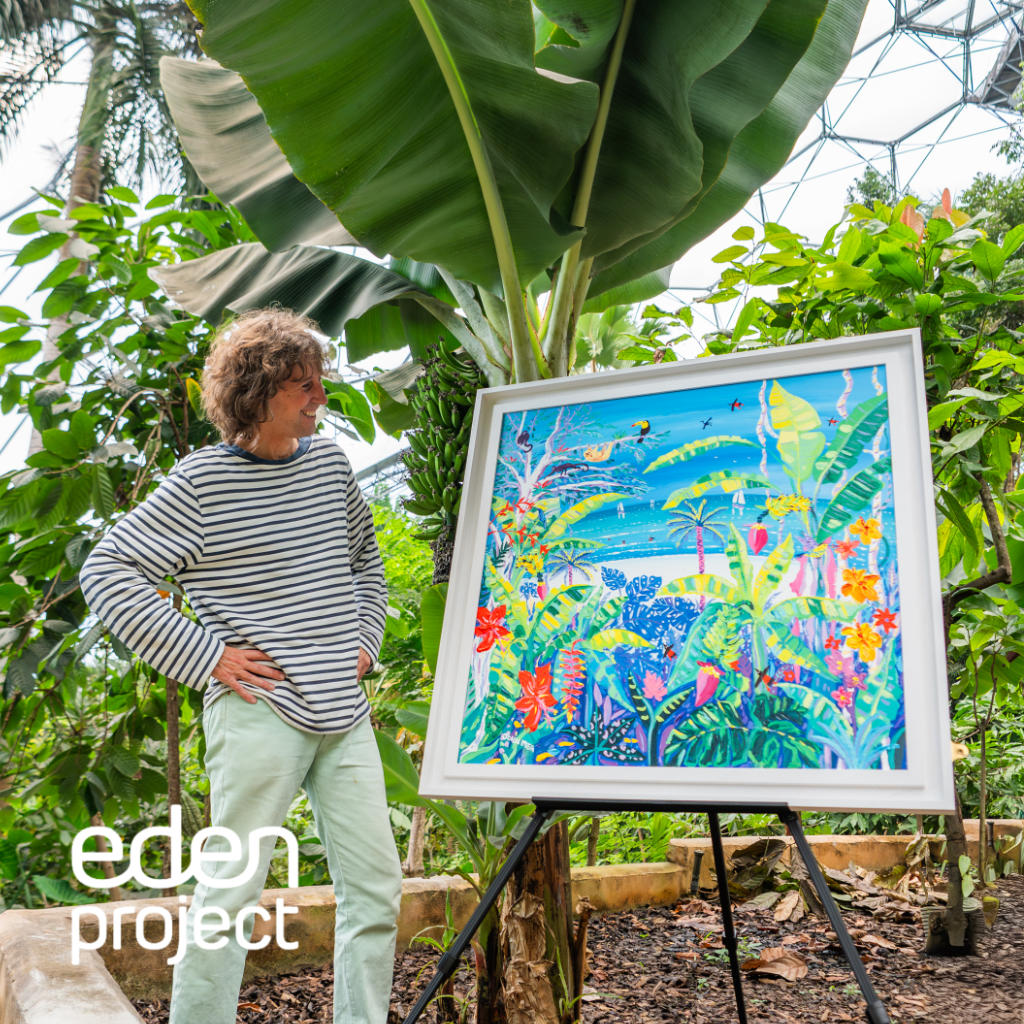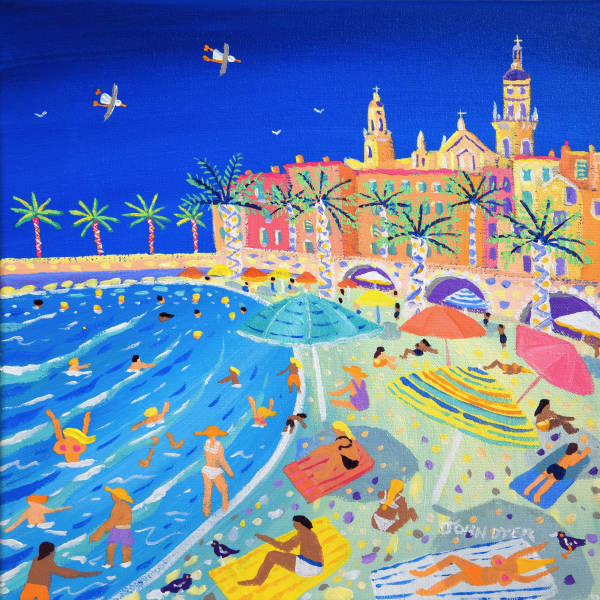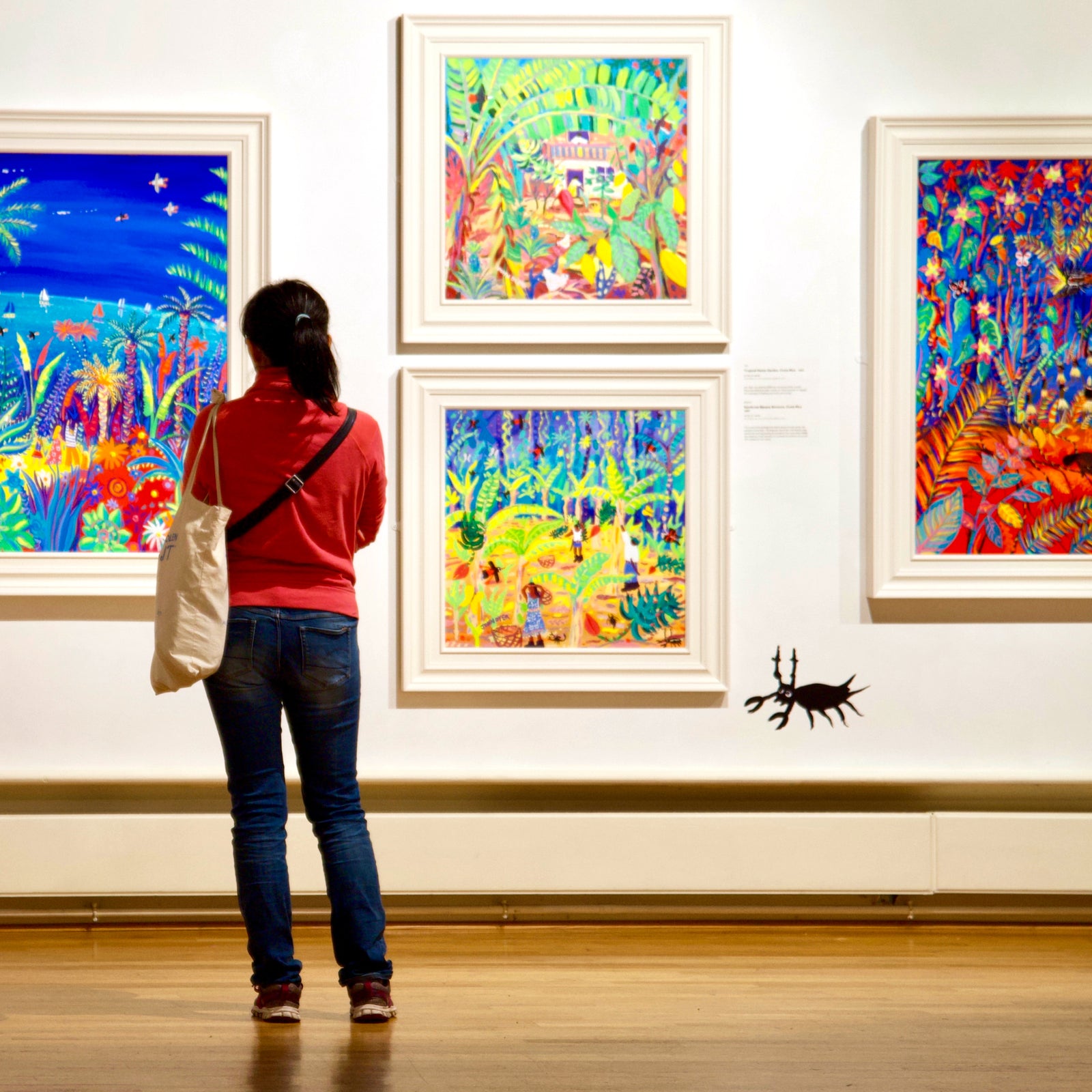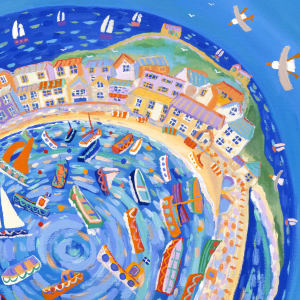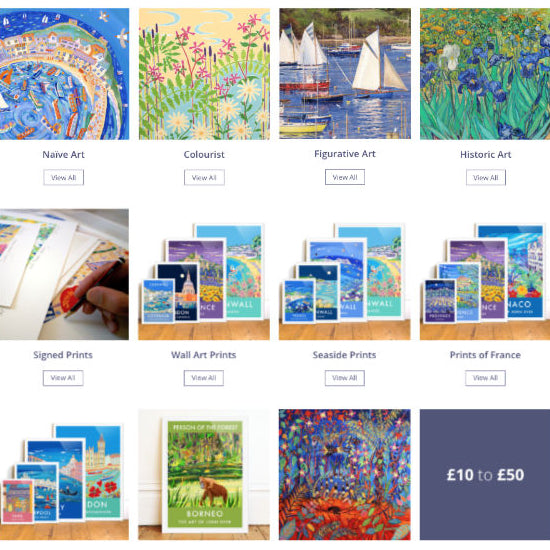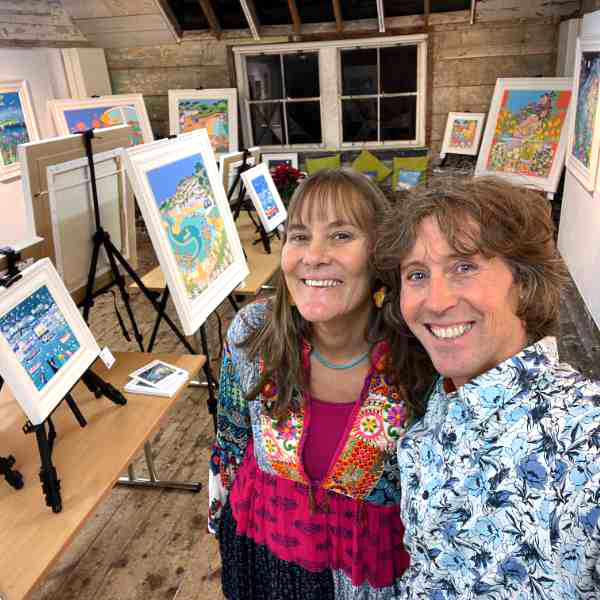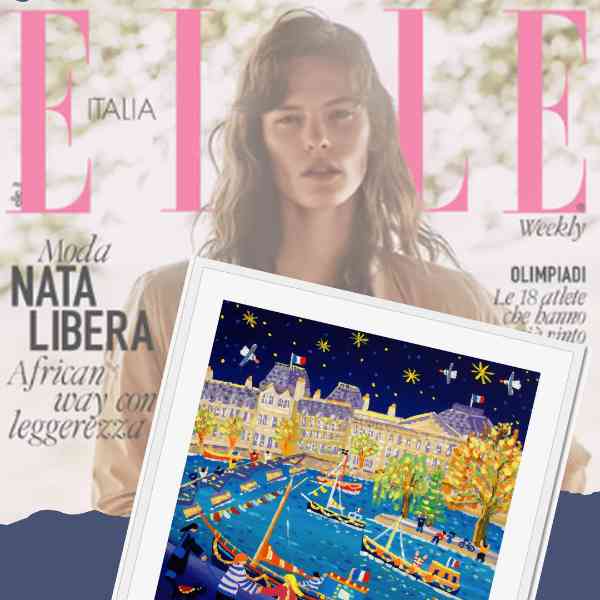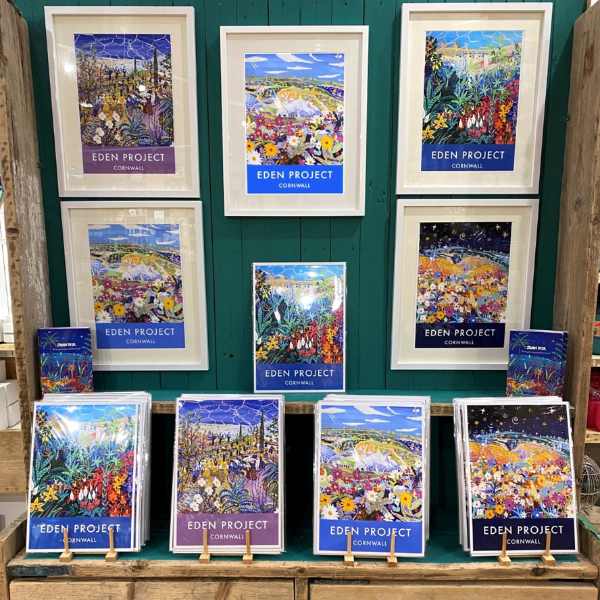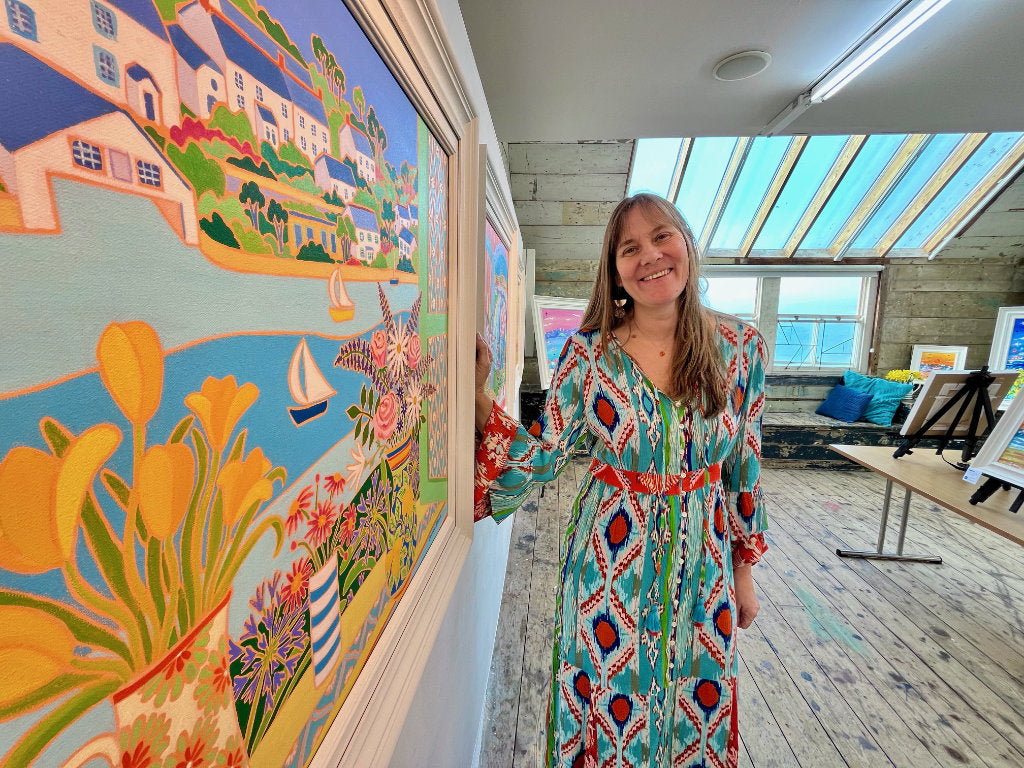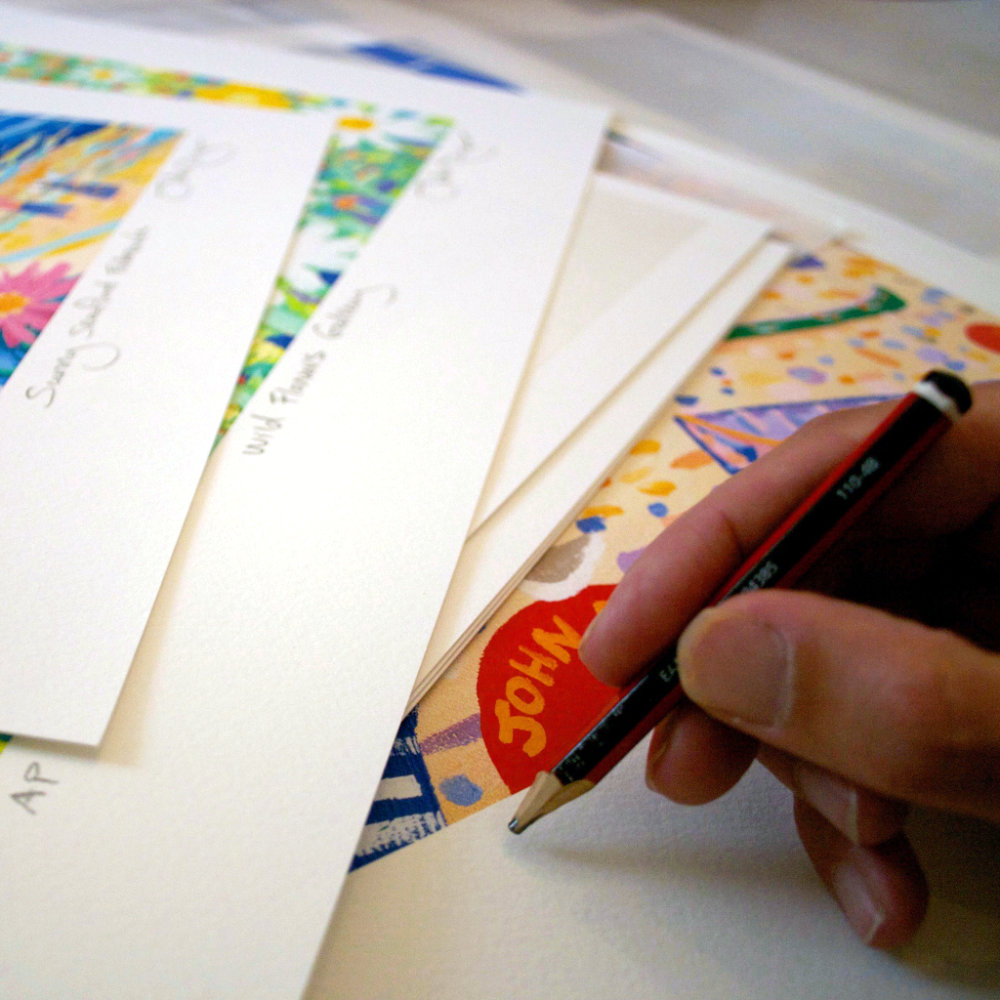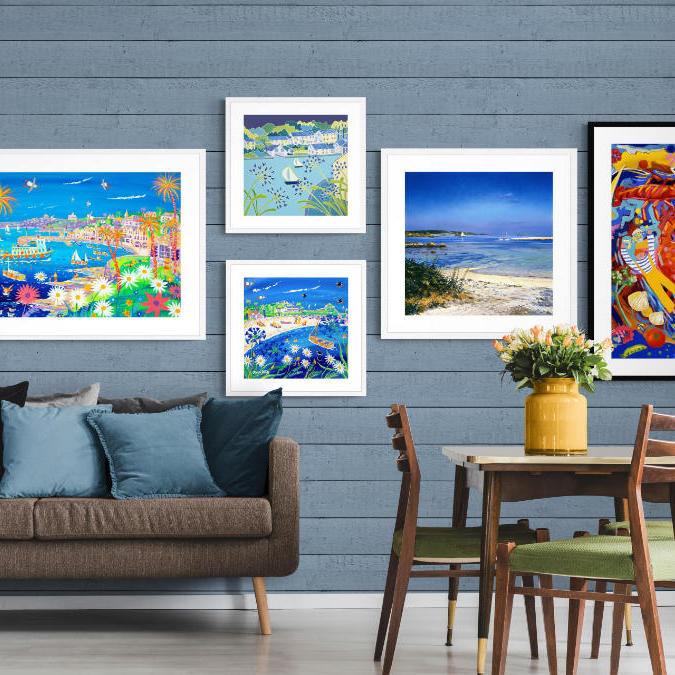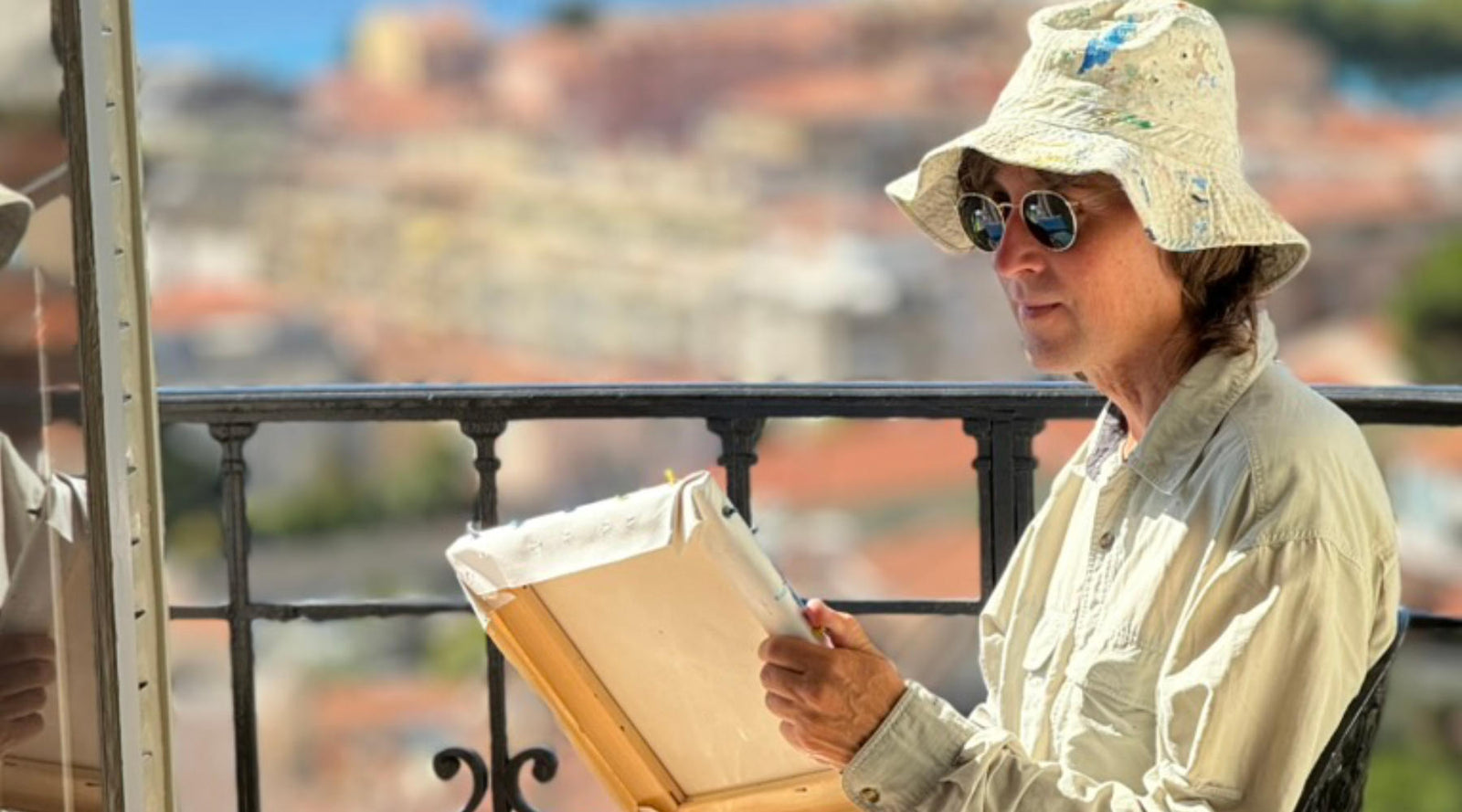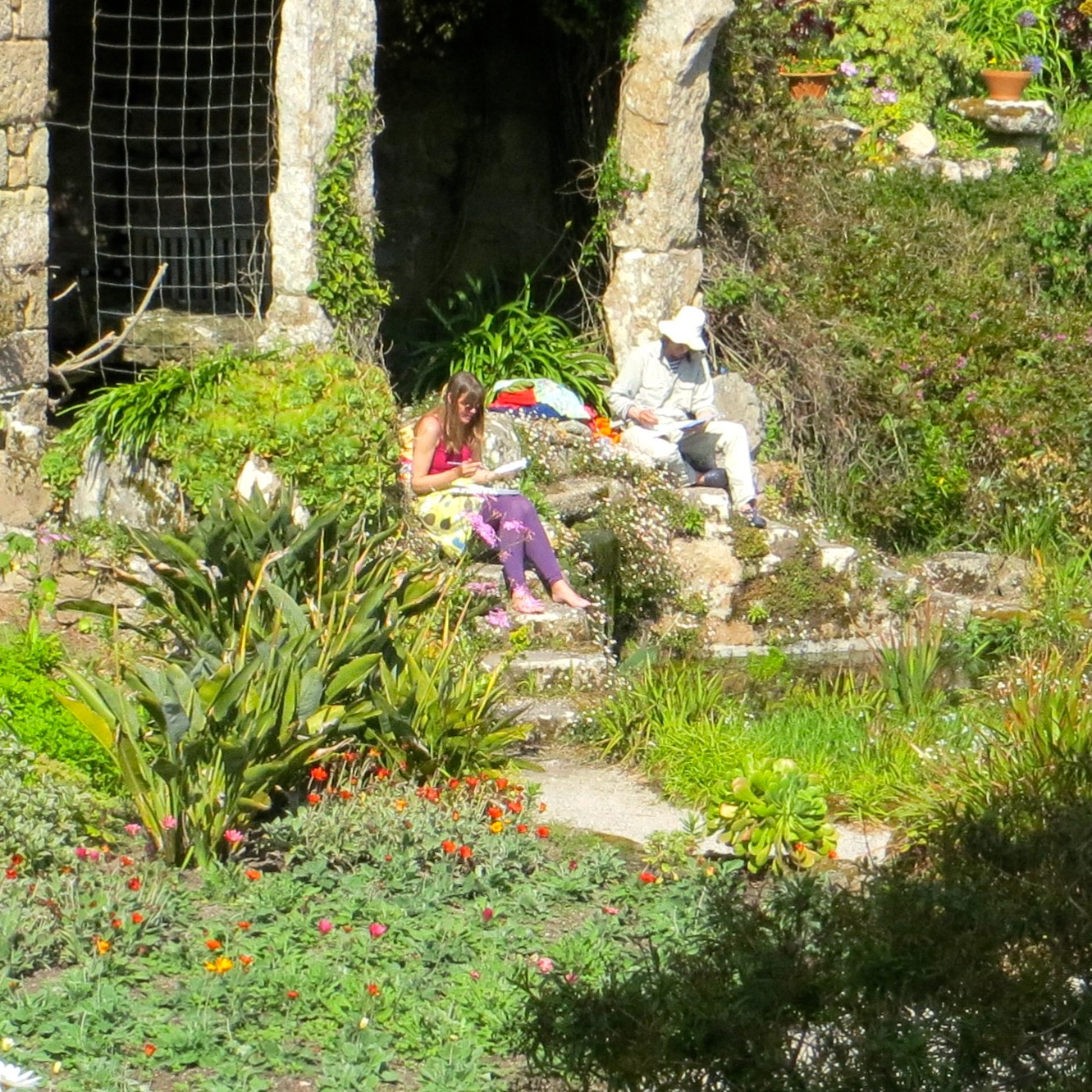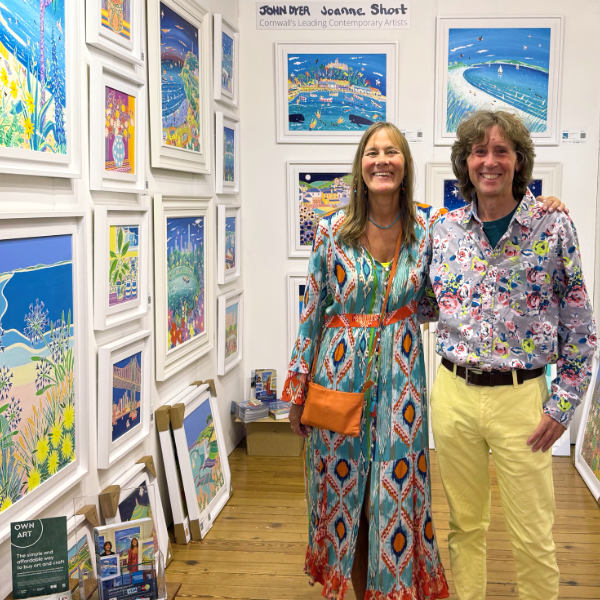
Above: 'The Fisherman's Farewell'1928 by Christopher Wood (1901-1930)
Cornish Artists John Dyer and Joanne Short explore London Art Galleries
This blog talks about the selection of British seascapes and Cornish Art that John and Joanne found in Tate Britain to inspire them to be ready for a new year of painting.
Tate Britain

Above: Cornish artists Joanne Short and John Dyer on the steps of the Tate Britain art gallery in London
In 1892 it was decided that a new art gallery should be built to house the British art that had previously been displayed as part of the National Gallery. Originally named the National Gallery of British Art, it was opened in 1897. Art collector and businessman Henry Tate provided a sizable donation towards the project, hence the name Tate Gallery.
Tate Britain is a stunning gallery situated at Milbank on the north bank of the Thames. It displays a plethora of British artworks from Tudor times to the modern day. These are displayed in chronological groups, telling a visual story of British art through the ages - Tudor portraits to British landscapes and a magnificent collection of Pre-Raphaelites are shown centrally with rooms leading off showing the development of British art during the 20th century, including original paintings by Turner, Henry Moore, Whistler, Hockney, Hepworth and Bacon.
Cornish Art in Tate Britain
John and I were delighted to discover several examples of Cornwall Art in the Tate Britain collection by famous Cornish artists.
Above: John Dyer showing the scale of the painting 'August Blue' (1893) by Henry Scott Tuke (1858-1929)
Henry Scott Tuke lived and worked in Falmouth and is well known for his paintings of Cornwall, especially of young men swimming in Falmouth Bay. Tuke grew up in Cornwall and is well known for his paintings of boats and people. In this large example of Tuke's work, the light reflects beautifully off of the water and the reflections of the figures dance in the ripples of the sea.

Above: Cornish artist Joanne Short standing next to the paintings 'The Fisherman's Farewell' 1928 by Christopher Wood (1901-1930), and 'St. Ives' c. 1928 by artist Alfred Wallis at Tate Britain in London
In 1928 Christopher Wood stayed in Cornwall with his friends, fellow artists Ben Nicholson and Winifred Nicholson; it is thought that the family in the foreground are the Nicholsons with their son Jake. The Painting behind the family is of crews of boatmen jumping into small boats in St Ives Harbour, pushing the crowded boats off the beach into the sea. The crews of fishermen heading out to sea create a picture of family love, sadness and farewell.
While staying in Cornwall, Christopher Wood was introduced to the work of Alfred Wallis, a fisherman turned artist who worked in a naive style using old paint on driftwood. In the painting above, this naive style shows a simplification of the buildings around the harbour with simple images of sailing boats in the background. The uneven shape of the work shows how Alfred Wallis used whatever he could find to paint on.

Above: 'Flower Table', 1928 by Winifred Nicholson (1893-1981)
This a beautiful example of a still life of flowers by Winifred Nicholson. The solid shapes of the vases and the solid table are reminiscent of the abstracted shapes later used by Ben Nicholson in his abstracted views of the landscape.

Above; 'June 1937, (painting)' by Ben Nicholson (1894–1982)
The work of Piet Mondrian very much influenced the example of artwork by Ben Nicholson we saw after visiting the artist's studio in 1934. The canvas measures nearly seven feet wide and was donated to the Permanent Collection of the Tate in 1955.
This is a true example of how Nicholson was interested in exploring how simple flat shapes of colour could create an illusion of depth.
Historical British Seascapes and Beach Paintings at Tate Britain
It was also inspiring to come across historic seascapes by other UK artists in the Tate Collection. Below are some of these paintings we liked the most and some of the images of paintings and prints of our own work which tie in and reflect similar scenes.
1824: A Distant View of St-Omer by Richard Parkes Bonington

Above: 'A Distant View of St-Omer' c1824, by Richard Parkes Bonington (1802-1828)
Richard Parkes Bonington moved to Calais with his parents in 1817 when he was 14. Most of his short life was spent in France.
He was admired by both English and French painters of the time. His paintings of the sea combine a sense of spontaneity and spaciousness with a close eye to detail.
Above: 'Fishing Boats at Priest's Cove', open edition print by Ted Dyer
In this painting of Priest's Cove Cornish artist Ted Dyer captures the quiet, industrious scene of the fishermen preparing their boats to go out fishing. In the same way as Richard Parkes Bonington, Ted Dyer is meticulous in his detail.
1854: Rhyl Sands by David Cox

Above: 'Rhyl Sands' c1854, by David Cox (1783-1859)
David Cox made regular visits to north Wales, often stopping at Rhyl when he changed trains on his way to his favourite destination, Betws-y-Coed. Cox mostly painted in watercolour and took up oil painting in his eighties. Here, Cox has painted the sky to look fresh and vibrant, like a watercolour.
Above: 'Summer Days, St Ives', open edition print by Ted Dyer
Similarly, Ted Dyer's skies are fresh, capturing the light and creating atmosphere. The artist's use of subtle colour and tonal variations helps to connect the wet sand on the beach to the sky and creates a painting that has a great depth, distance and a fantastic quality of light.
1858: Pegwell Bay, Kent by William Dyce

Above: 'Pegwell Bay, Kent - a Recollection of October 5th 1858' by William Dyce (1806-1864)
The extraordinary aspect of this painting is undeniably its meticulous attention to detail, which truly represents the Pre-Raphaelite style that was so popular during this time. Each stroke and colour shows remarkable accuracy.
William Dyce’s 'Pegwell Bay, Kent – a Recollection of October 5th, 1858' is a powerful representation that accurately records an eventful day. Captured in the painting are his wife, her two sisters and her son on Ramsgate beach - located on England's south coast. Donati's Comet - one of the brightest comets to appear during the 19th century - appeared that day. Discovered by Giovanni Donati only four months prior, on June 2nd, it had reached its nearest point to the sun. William Dyce painted it three days later.
Above: 'Sailing Beneath the Comet, Falmouth' limited edition print by John Dyer
Capturing a stunning vision of the night sky, this piece by John Dyer exhibits Hale-Bopp's mesmerizing show through Cornish skies in 1997. This bright comet and surrounding stars, in a glowing blue sky, illuminate the palm trees and turquoise water full of Cornish boats and yachts.
Named after Alan Hale and Thomas Bopp who were the first to observe this, the most recent and brightest comet seen in the northern hemisphere in the 20th century. It was at its brightest in 1997 and is captured in this painting by John in all its glory.
1880: Summer Sundown by William McTaggart

Above: 'Summer Sundown' 1880, by William McTaggart (1835-1910)
William McTaggart was an iconic Scottish artist in the latter portion of the 19th century. He is considered Scotland's premier landscape painter and masterfully worked in both oils and watercolours. Due to the looser style of his later works, he has been described as 'The Scottish Impressionist'. He regularly stayed during the summer at the tiny fishing village of Machrihanish on the west coast of Scotland, where he painted this, probably en plein air.
Above: 'Summer Sunset, Bedruthan Steps', original oil painting by artist Joanne Short
Joanne Short's painting of Bedruthan Steps in Cornwall beautifully depicts the iridescent colours of the cornish North coast at sunset. The awe-inspiring rocks cast dynamic shadows over the beach, and a magnificently gradated sky fades from orange to warm, buttery yellow.
1887: The Bridge by Philip Wilson Steer

Above: 'The Bridge' 1887, by Philip Wilson Steer (1860-1942)
Philip Wilson Steer was primarily schooled in France and, on his return to Britain, found himself gravitating towards seaside locations such as Walberswick in Suffolk, where he painted 'The Bridge'. Despite his artworks being displayed at innovative galleries like the Grosvenor Gallery in London and Les XX of Brussels, the absence of detail, along with his preference for undefined subjects and misty lighting, resulted in harsh criticism from traditionalists. He nearly abandoned painting altogether but eventually co-founded the New English Art Club, establishing him as a principal figure in British Impressionism.
Above: 'Gateway to Cornwall', limited edition print by John Dyer
Similarly to the painting above by Philip William Steer, John captures the romantic moment of a couple looking across the river together. Painted to commemorate Brunel 200, this image depicts a celebration of colour and fireworks over The Royal Albert Bridge, spanning the River Tamar, the 'Gateway to Cornwall'.
These iconic works of art in Tate Britain from some of Britain’s most celebrated painters demonstrate the beauty and diversity of the UK's landscape. Whether you are looking at a painting by William McTaggart, Philip Wilson Steer or Winifred Nicholson, these artists have captured breathtaking scenes with an incredible level of detail and skill. From exploring different techniques to capturing the majesty of nature, these pieces remind us why British art is so admired worldwide.
Cornwall Art
Cornwall art is still one of the most widely collected and acclaimed genres of art in Britain. We represent three of Cornwall's best-known artists, John Dyer, Ted Dyer and Joanne Short. If you want to purchase Cornish art, original paintings of Cornwall or an art print of Cornwall, do take a look at our contemporary artists' works that you can purchase from our online gallery.
Visit JohnDyerGallery.com for the full selection of available art from Cornwall.

